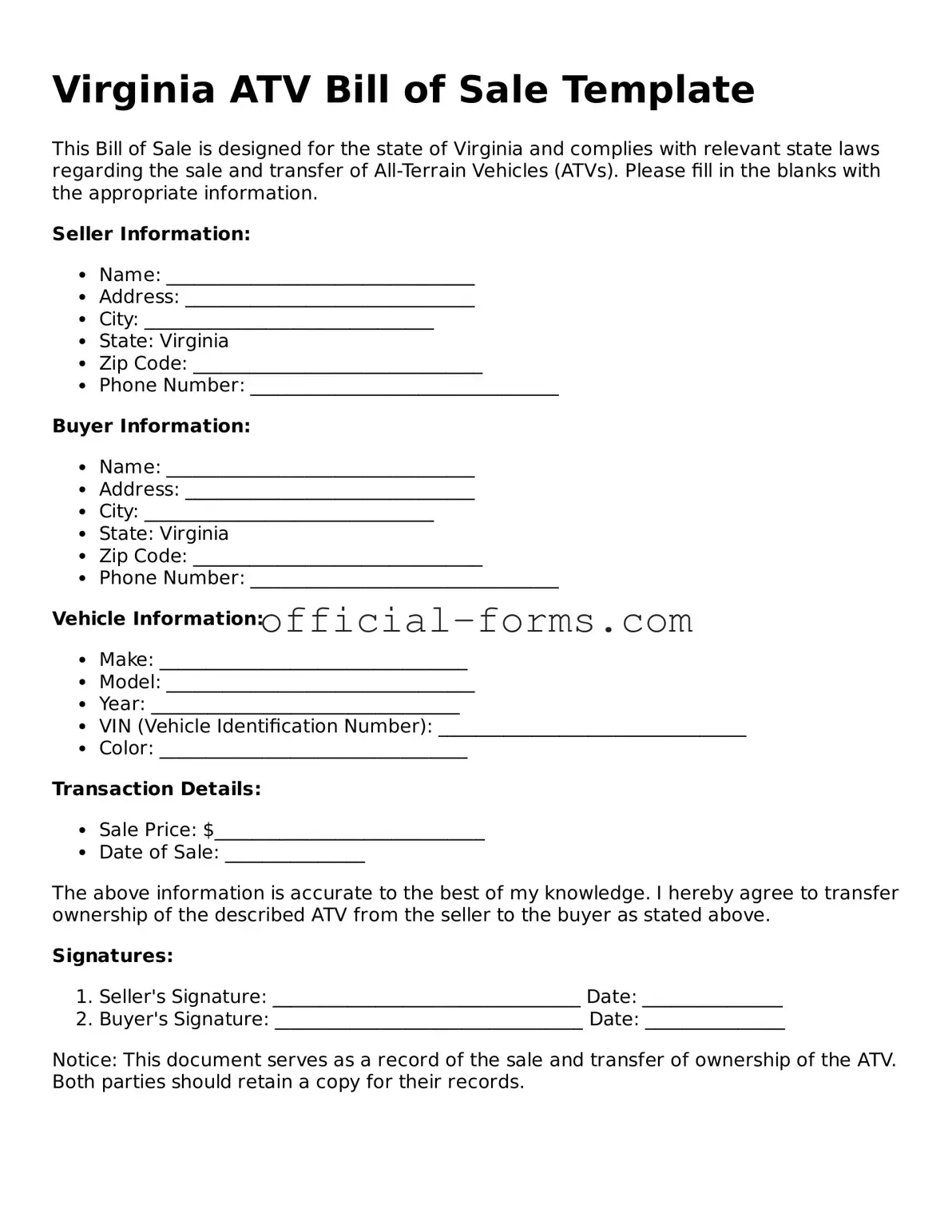Filling out the Virginia ATV Bill of Sale form can be straightforward, but many people make common mistakes that can lead to complications later. One frequent error is failing to include the correct vehicle identification number (VIN). The VIN is crucial for identifying the ATV, and any inaccuracies can cause issues with registration or ownership transfer.
Another mistake is not providing the full names and addresses of both the buyer and seller. This information is essential for legal documentation. Omitting details can create confusion and may even lead to disputes about ownership.
Many people also forget to include the sale price. Leaving this section blank can raise questions during tax assessments or if any legal issues arise. Always ensure that the sale price is clearly stated to avoid future problems.
Not dating the form is another common oversight. The date of the sale is important for record-keeping and can impact the timing of registration. Make sure to include the date when the transaction occurs.
Some individuals neglect to sign the document. Both the buyer and seller must sign the Bill of Sale for it to be valid. Without signatures, the form may not hold up if any disputes arise later on.
Incorrectly checking the box for whether the ATV is sold "as-is" can lead to misunderstandings. Be clear about the condition of the ATV and ensure that the appropriate box is checked to avoid any future liability issues.
People sometimes fail to provide accurate descriptions of the ATV, including its make, model, and year. This information helps to clarify what is being sold and protects both parties. A vague description can lead to disputes about what was included in the sale.
Not keeping a copy of the completed Bill of Sale is a mistake many make. It is vital for both the buyer and seller to retain a copy for their records. This document serves as proof of the transaction and can be important for future reference.
Lastly, some individuals may not check local requirements for additional documentation. Depending on the county or city, there may be specific rules or forms needed in addition to the Bill of Sale. Always verify local regulations to ensure compliance.
